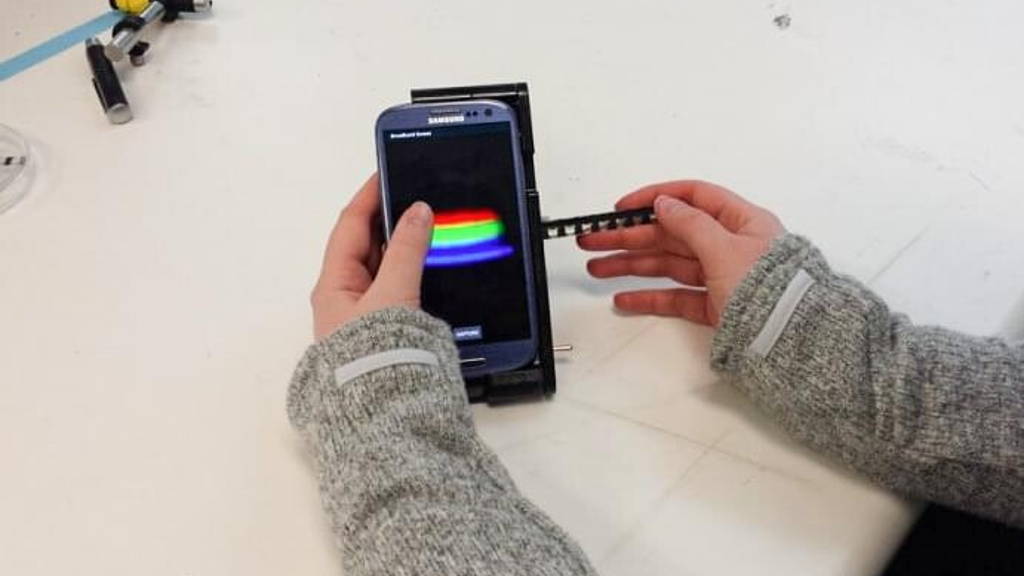Costing only $550, the spectral transmission-reflectance-intensity (TRI)-Analyzer from Bioengineering and Electrical & Computer Engineering Professor Brian Cunningham’s lab attaches to a smartphone and analyzes patient blood, urine, or saliva samples as reliably as clinic-based instruments that cost thousands of dollars.
Analyser as Swiss army knife
The spectral transmission-reflectance-intensity (TRI)-Analyzer attaches to a smartphone and analyzes patient blood, urine, or saliva samples as reliably as clinic-based instruments that can cost up to thousands of dollars. In this, the TRI Analyzer is like the Swiss Army knife of biosensing, explains Brian Cunningham, the Donald Biggar Willett Professor of Engineering and director of the Micro + Nanotechnology Lab at Illinois. “It’s capable of performing the three most common types of tests in medical diagnostics, so in practice, thousands of already-developed tests could be adapted to it.”In a recently published paper, Cunningham’s team used the TRI Analyzer to perform two commercially available assays—a test to detect a biomarker associated with pre-term birth in pregnant women and the PKU test for newborns to indirectly detect an enzyme essential for normal growth and development. Their tests results were comparable to those acquired with clinic-grade spectrometer instrumentation.
More portable laboratory then specialized device
“The TRI Analyzer is more of a portable laboratory than a specialized device,” said Kenny Long, an MD/PhD student and lead author of the research study. Among the many diagnostic tests that can be adapted to their point-of-care smartphone format is an enzyme-linked immunosorbent assay (ELISA), which detects and measures a wide variety of proteins and antibodies in blood and is commonly used for a wide range of health diagnostics tests. The system is capable of detecting the output of any test that uses a liquid that changes color, or a liquid that generates light output (such as from fluorescent dyes).Turning smartphone into high-performance spectrometer
The TRI Analyzer operates by converting the smartphone camera into a high-performance spectrometer. Specifically, the analyzer illuminates a sample fluid with the phone’s internal white LED flash or with an inexpensive external green laser diode. The light from the sample is collected in an optical fiber and guided through a diffraction grating into the phone’s rear-facing internal camera. These optical components are all arranged within a 3D-printed plastic cradle.Simultaneous measurements of multiple samples are possible by using a microfluidic cartridge that slides through an opening in the back of the cradle. This ability to analyze multiple samples quickly and reliably makes the Analyzer suitable for patients who lack convenient access to a clinic or hospital with diagnostic test facilities or for patients with urgent health situations requiring rapid results.
A paper describing the results in detail, entitled “Multimode smartphone biosensing: the transmission, reflection, and intensity spectral TRI Analyzer,” is currently available online. The work was supported by the National Science Foundation.

